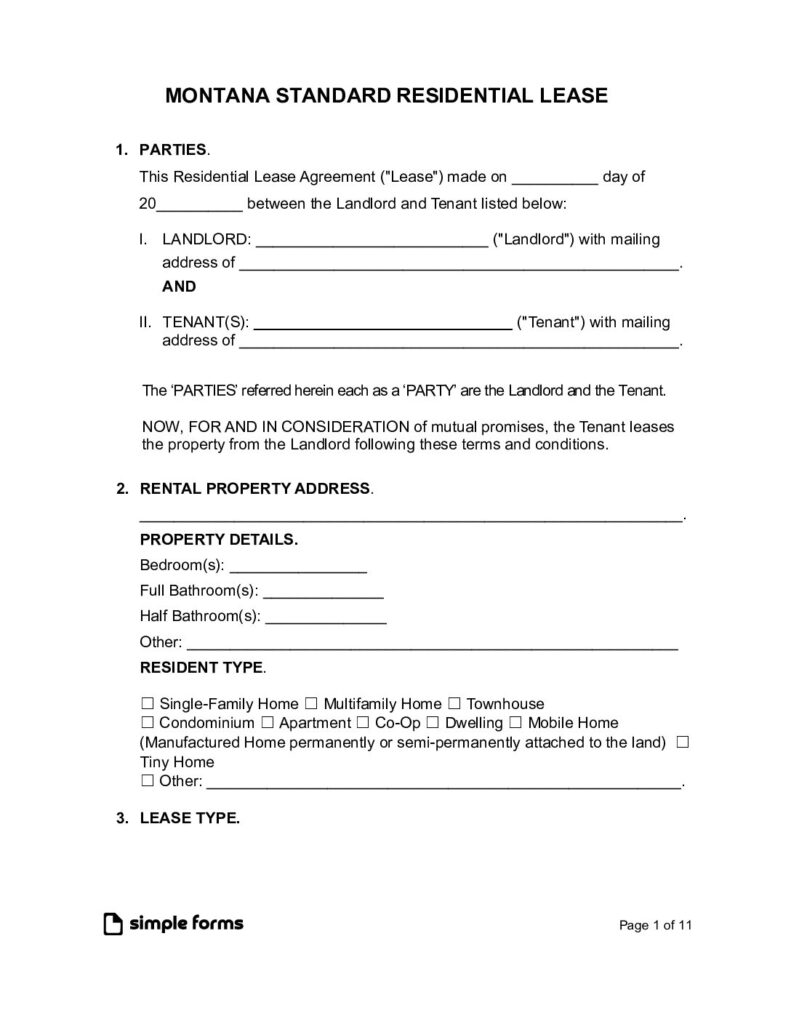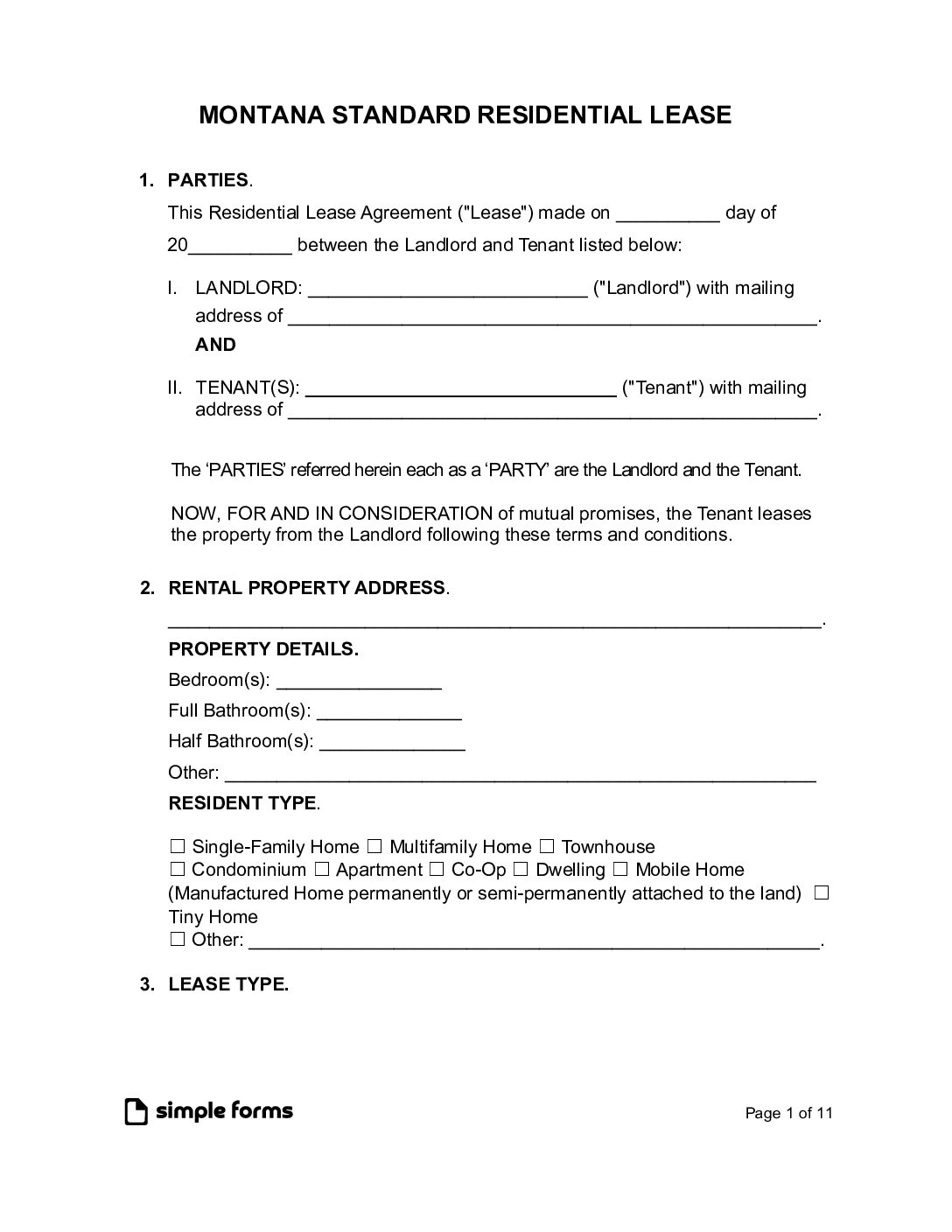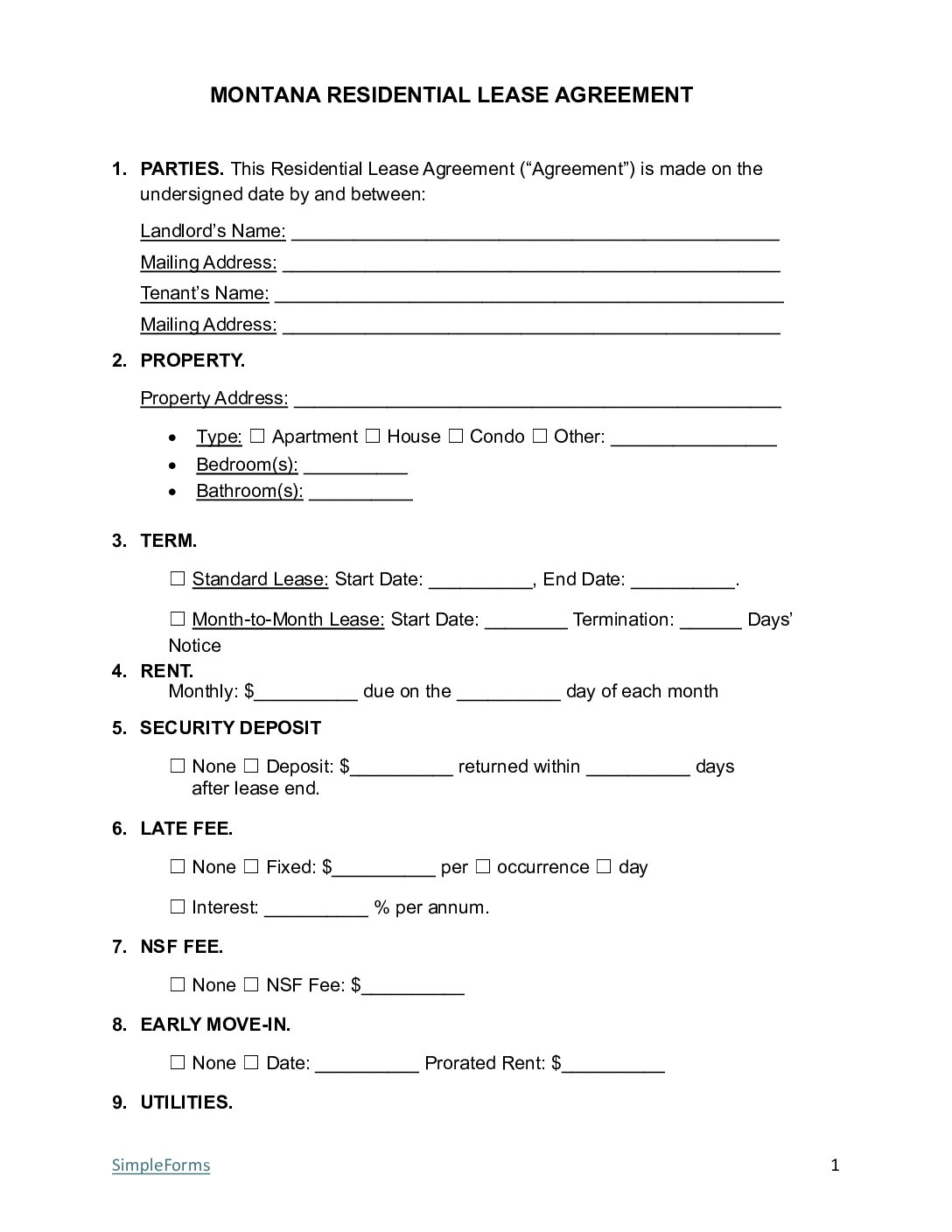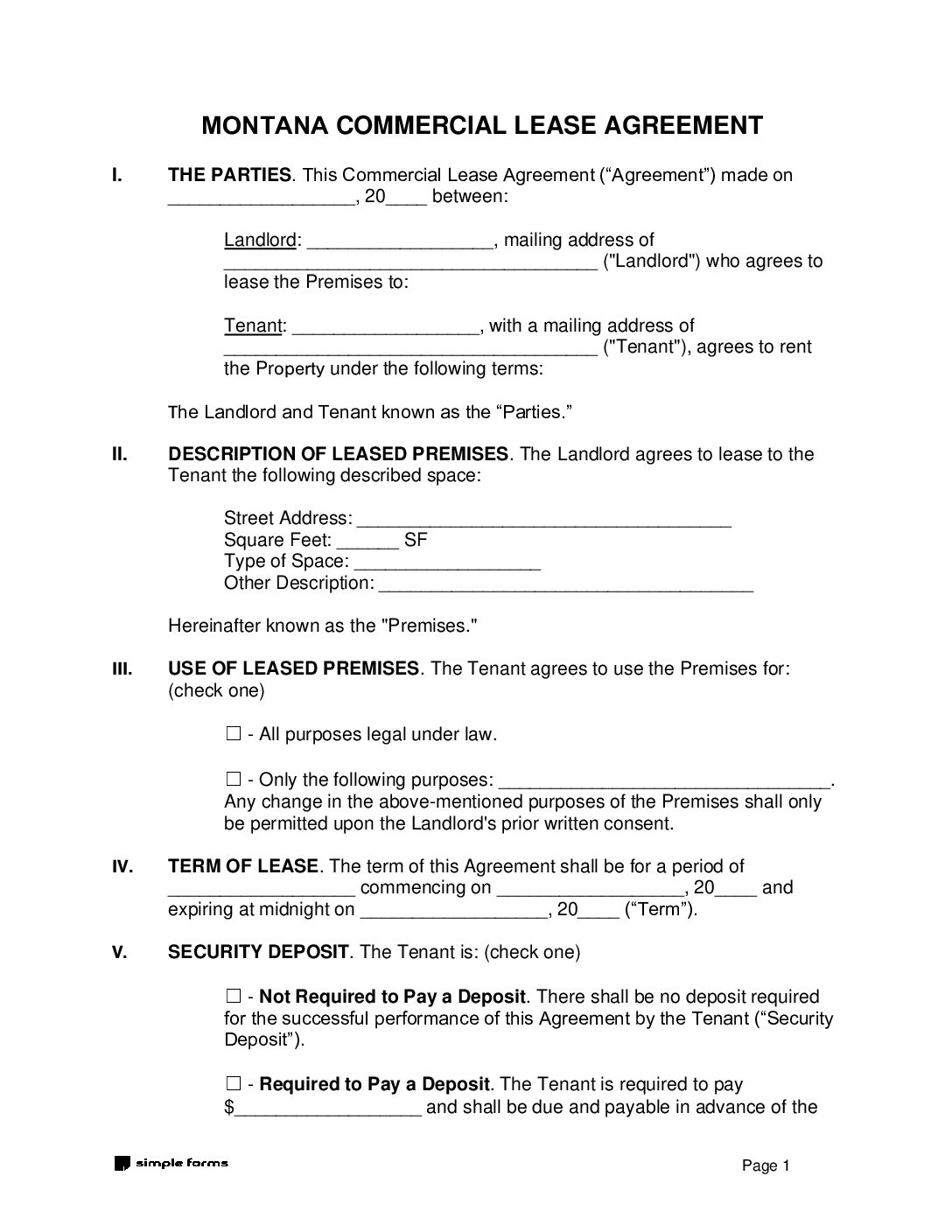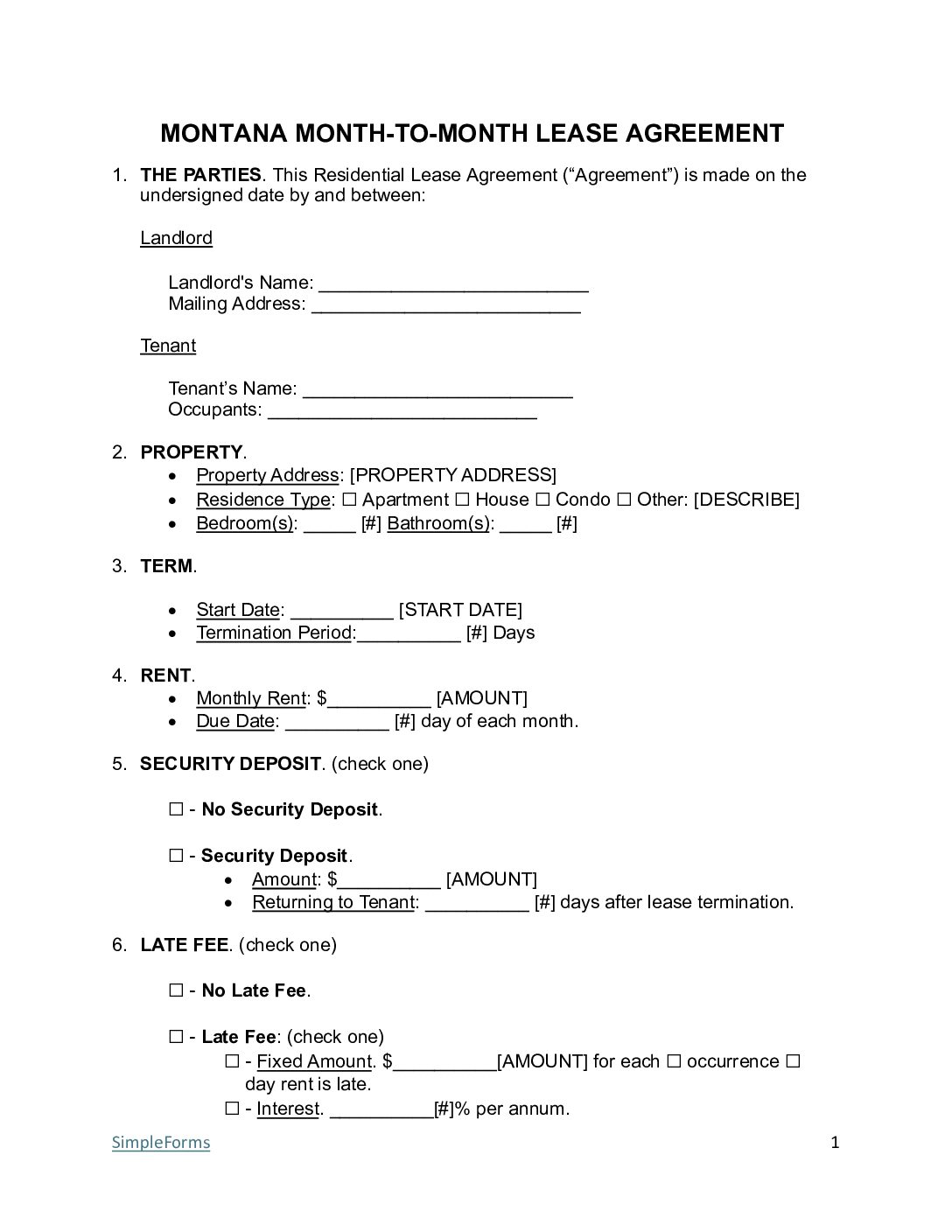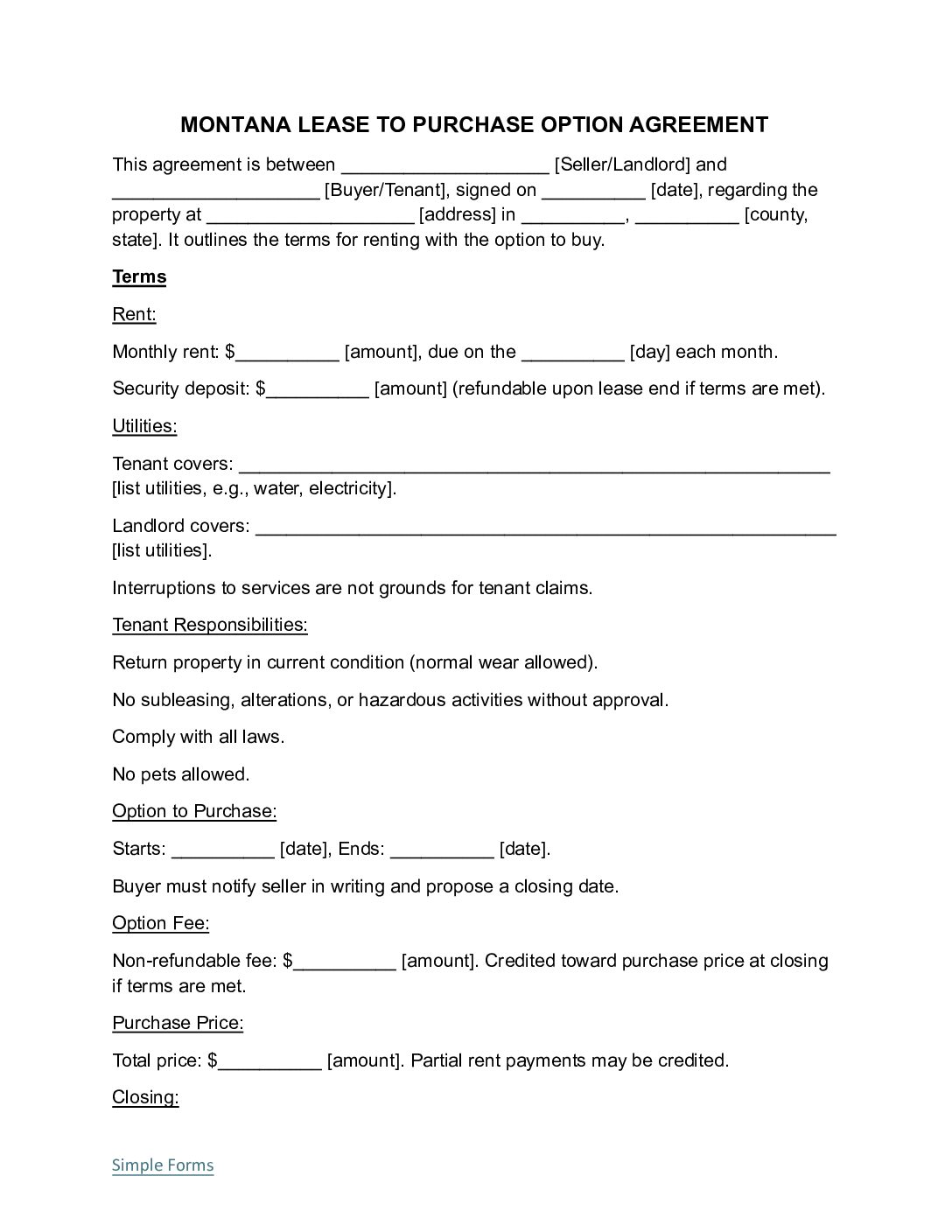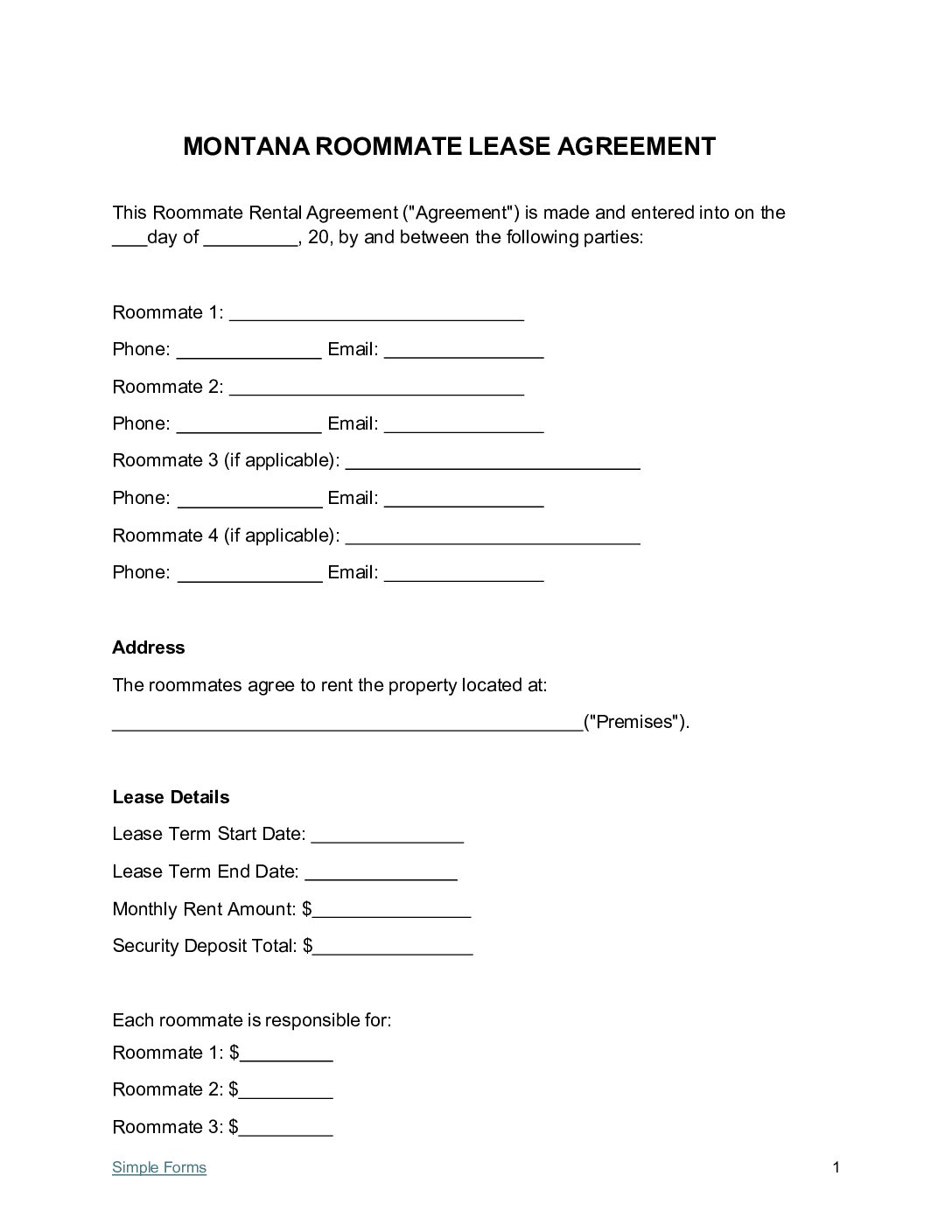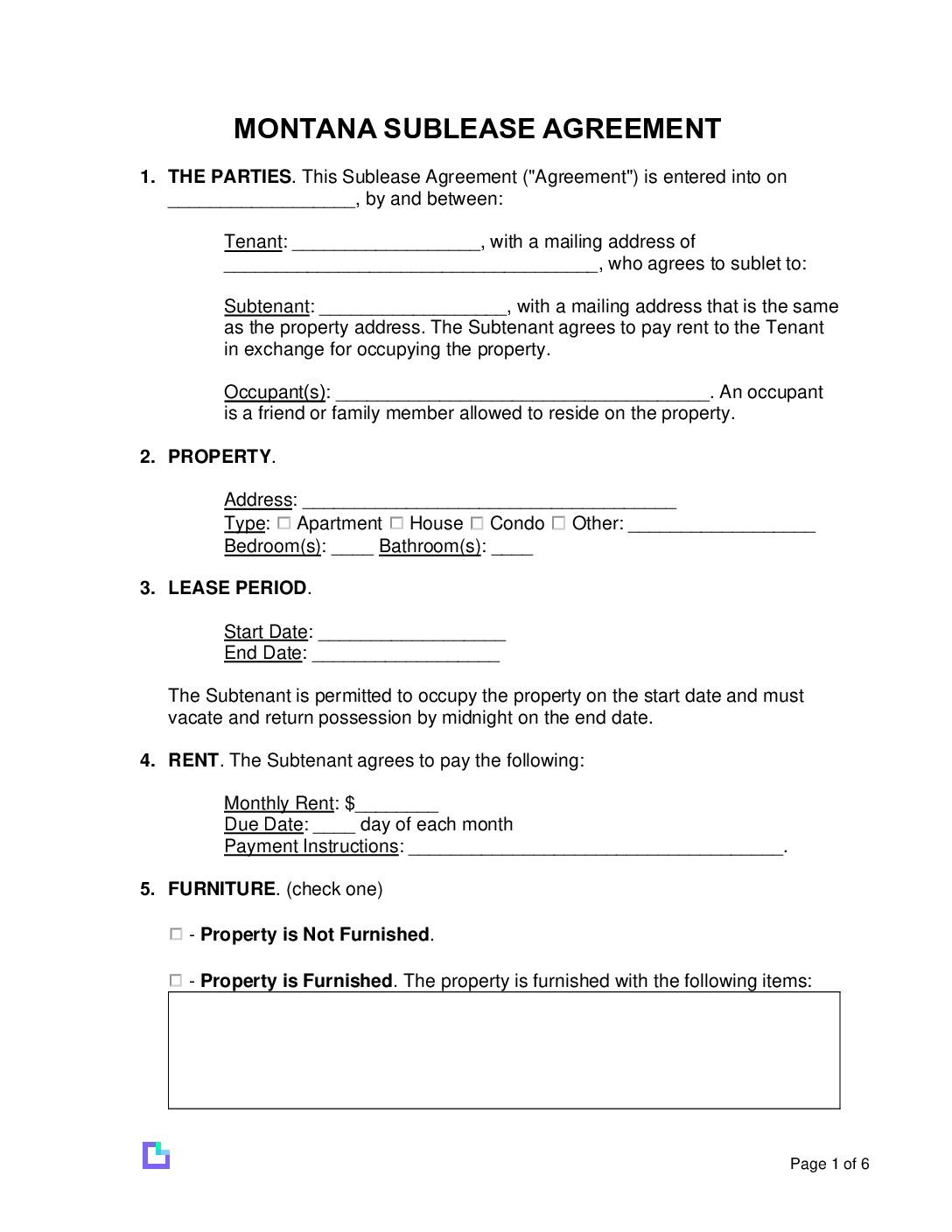By Type (6)
What the Montana Lease Agreement Form Covers?
This document includes the following subjects that pertain to the laws regarding the relationship between the landlord and tenant in Montana:
- Montana Residential Landlord and Tenant Act
- Security Deposit Law
- Lease Termination
- Landlord’s Access to the Property
- Rent Due Date plus Late Fees
- Eviction Procedures
- Tenant Property Maintenance Responsibilities
- Required Disclosure Forms
- Hunting Land for Lease Regulations
Montana Residential Landlord and Tenant Act
Residential leases are regulated by the Montana Residential Landlord and Tenant Act of Title 70, Chapter 24 of the Montana Code Annotated.
- Maintenance of the Property – Landlords and tenants must keep properties safe and livable, fixing issues such as plumbing, heating, or structural problems.[1]
Security Deposit Law
Summary:
- Maximum Amount – No limit. Landlords can request any amount as there are no laws governing maximum amounts.
- Returning to the Tenant – Ten (10) days from the lease end date.[2]
- Deductions – The landlord must create an itemized list and provide to the tenant.
- What cannot be deducted? – Normal wear and tear cannot be deducted by the tenant.
Lease Termination Rules for Landlords and Tenants
Summary: Both landlords and tenants have rights to terminate a lease under the following conditions.[3]
- Week-to-week – can be ended by either the landlord or tenant with at least 7 days’ written notice before the specified end date.
- Month-to-month – can be ended by either party with at least 30 days’ written notice before the specified end date.
Landlord’s Access to the Rental Property
Rent Due Dates and Late Fees
- Grace Period – No grace period.
- Maximum Late Fee – No limit amount. Should be clearly stated in the lease agreement.
- Returned Checks (NSF) – $30 per bounced check.
Eviction Procedures and Notices
Tenant Property Maintenance Requirements
Summary: Tenants can request repairs in writing and terminate the lease or seek damages if repairs are not addressed within 14 days.[7]
Required Disclosure Forms
Summary:
- Lead-Based Paint Disclosure – Required for properties built before 1978.[8]
- Landlord Contact Information – Must include the landlord’s name and address in the lease agreement.
- Mold Disclosure Form – A mold disclosure form informs tenants about any mold presence or history in a property.[9]
- Methamphetamine Disclosure For – This form informs tenants about past or current meth contamination on a property.[10]
- Move-in Checklist – A move-in checklist documents a property’s condition at the start of a rental. This is required in order to prevent security deposit disputes.[11]
- Post-Move Out Notice of Additional Cleaning (conditional) – Landlords can use if the tenant has left cleaning tasks unfinished that are not considered normal wear or your regular maintenance duty after the end of the lease and tenant moves out.[12]
